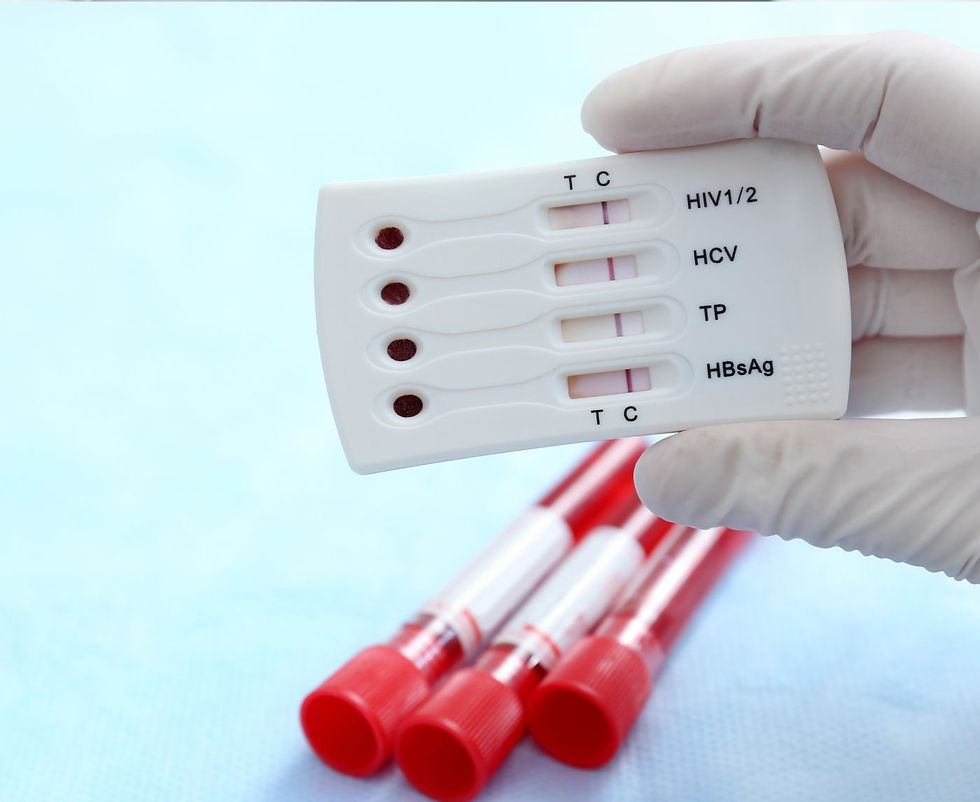Which Braces Are Best for Protruding Teeth?
- dentalclinicdubai7
- Oct 31
- 6 min read
Protruding teeth, often referred to as “buck teeth” or overjet, occur when the upper front teeth extend significantly over the lower ones. This dental misalignment can affect not only the appearance of your smile but also your bite, speech, and oral hygiene. Many people wonder, “Which braces are best for fixing protruding teeth?” Modern orthodontics offers several innovative solutions designed to correct this issue efficiently and discreetly. Whether you’re exploring options at a Dental Clinic Near me or looking for guidance before starting treatment, this comprehensive article covers everything you need to know—from how braces work to finding the right type for your needs.
What Is the Treatment and How It Works?
Braces for Protruding Teeth Treatment in Dubai work by gradually moving misaligned teeth into their ideal positions through continuous, controlled pressure. The process not only improves dental alignment but also enhances jaw function and overall oral health.
How the treatment works:
Initial evaluation: A dentist assesses your teeth, jaw structure, and bite pattern through X-rays and scans.
Customized plan: Based on your unique dental anatomy, a personalized orthodontic plan is created.
Braces application: Brackets are bonded to the teeth, connected by wires or aligners to gently shift teeth into place.
Progress monitoring: Regular adjustments help guide tooth movement over time.
Retention phase: Retainers are used post-treatment to maintain results.
This structured process ensures safe, gradual correction without damaging enamel or gum tissue. In professional setups such as Enfield Dental Clinic in Dubai, advanced imaging and digital planning are used to make treatment precise and comfortable.

Importance of Treating Protruding Teeth:
Correcting protruding teeth is more than just a cosmetic improvement—it’s vital for maintaining long-term oral health and comfort. Misaligned teeth can lead to a host of dental and lifestyle challenges if left untreated.
Why treatment matters:
Improved bite alignment: Balanced pressure distribution prevents jaw strain.
Enhanced aesthetics: A straighter smile increases confidence and facial harmony.
Easier oral hygiene: Straight teeth are simpler to clean, reducing decay risks.
Reduced trauma risk: Protruding teeth are more prone to chipping and injury.
Better speech clarity: Proper alignment supports correct tongue placement and articulation.
By addressing the issue early, you can prevent complications and enjoy a healthier, more confident smile. For those seeking expert evaluation, consulting Dentists in Dubai can help determine the most suitable orthodontic approach.
Types of Braces for Protruding Teeth:
With advancements in dental technology, several types of braces can correct protruding teeth effectively. Each type has unique benefits depending on your dental needs, comfort preferences, and aesthetic goals.
1. Metal Braces
Traditional metal braces are the most common and effective solution for severe protrusion. They use durable stainless-steel brackets and wires to apply consistent pressure, gradually pulling teeth into alignment.
Strong and reliable for complex cases.
Suitable for both children and adults.
Provide fast results due to controlled tooth movement.
2. Ceramic Braces
Ceramic braces function similarly to metal ones but are made from clear or tooth-colored materials, making them less visible.
Blend naturally with teeth.
Ideal for those concerned about aesthetics.
Slightly more delicate than metal braces but equally effective.
3. Lingual Braces
Lingual braces are attached behind the teeth, making them virtually invisible. They work like traditional braces but remain hidden from view.
Completely discreet option.
Custom-made for each tooth’s contour.
Require good oral hygiene due to their position.
4. Clear Aligners (Invisalign)
Aligners are transparent, removable trays that gently reposition teeth without metal components. They are popular among adults seeking a nearly invisible treatment option.
Comfortable and removable for eating or cleaning.
Ideal for mild to moderate protrusion cases.
Require commitment to wearing them as prescribed.
5. Self-Ligating Braces
These advanced braces use clips instead of elastic ties to hold wires, reducing friction and treatment time.
More comfortable adjustments.
Easier cleaning and maintenance.
Faster movement compared to traditional braces.
The “best” type of braces depends on your dental condition, lifestyle, and aesthetic preferences. Your orthodontist will evaluate your case and recommend the most effective option.
Preparation Before Treatment:
Before starting orthodontic treatment, a thorough preparation phase ensures a smooth and successful experience.
Steps involved in preparation:
Comprehensive oral examination: The dentist assesses the health of your teeth and gums.
Imaging and records: X-rays, photos, and impressions are taken for treatment planning.
Treatment discussion: You’ll be informed about duration, expectations, and post-care steps.
Addressing existing issues: Cavities, gum disease, or tooth extractions (if needed) are handled first.
Lifestyle guidance: Avoid habits like biting nails or chewing hard foods that may damage braces.
Proper preparation helps avoid complications and ensures that your braces deliver the desired results efficiently.
Aftercare and Maintenance:
Once your braces are on, maintaining excellent oral hygiene and following aftercare instructions are crucial. This ensures effective tooth movement and prevents oral health issues during treatment.
Aftercare recommendations:
Brush after every meal: Use a soft-bristled brush and fluoride toothpaste.
Floss daily: Special orthodontic flossers or water flossers help clean between brackets.
Avoid sticky and hard foods: Prevents damage to wires and brackets.
Regular check-ups: Periodic visits for adjustments and progress monitoring.
Use orthodontic wax: Helps relieve irritation from brackets or wires.
After completing your braces journey, retainers will help maintain your new smile. Consistency in care ensures lasting results and prevents teeth from shifting back.
Ideal Candidate for Braces:
While nearly anyone with protruding teeth can benefit from braces, certain factors determine the best candidates.
You may be a good candidate if:
You have moderate to severe protrusion or misalignment.
Your teeth and gums are healthy.
You’re motivated to maintain oral hygiene.
You’re committed to attending follow-up appointments.
You want a long-term correction rather than a temporary fix.
Braces can work wonders at any age, making them suitable for teens and adults alike who want to improve both aesthetics and function.
How to Choose the Right Clinic?
Selecting the right orthodontic clinic plays a crucial role in the success of your treatment. The quality of care, technology, and expertise all contribute to the final outcome.
Factors to consider when choosing a clinic:
Experienced orthodontists: Ensure the clinic has specialists with expertise in treating protruding teeth.
Modern equipment: Advanced imaging and digital planning improve precision and comfort.
Variety of treatment options: Choose a clinic offering metal, ceramic, and aligner options.
Transparent communication: The right clinic will guide you clearly through each stage.
Comfort and care: A welcoming environment enhances your overall treatment experience.
If you’re based in Dubai or nearby, visiting a Dental Clinic Near me gives you access to advanced orthodontic care and modern treatment solutions designed for long-lasting results.
Risks and Benefits of Braces:
Potential Risks:
Mild discomfort or soreness after adjustments.
Temporary speech changes or mouth irritation.
Difficulty cleaning teeth during the initial stages.
Risk of teeth shifting back if retainers are not worn post-treatment.
Benefits:
Properly aligned teeth and improved bite function.
Reduced risk of decay and gum disease.
Enhanced facial symmetry and smile aesthetics.
Boosted self-confidence and social comfort.
Long-term oral health benefits.
When supervised by experienced professionals, the risks are minimal, and the benefits can last a lifetime.
Frequently Asked Questions (FAQs):
1. Which braces work fastest for protruding teeth?
Metal braces generally move teeth faster because of their strong and consistent pressure.
2. Can aligners fix severely protruding teeth?
Aligners work best for mild to moderate cases. Severe misalignments may need braces.
3. How long will treatment take?
On average, treatment can take between 12 and 24 months, depending on severity.
4. Are braces painful?
You might feel slight discomfort initially, but it usually subsides within a few days.
5. Will braces change my face shape?
Yes, correcting protruding teeth can subtly enhance your facial balance and profile.
6. Can adults get braces?
Absolutely! Modern braces are suitable for both adults and teens.
7. Do I need retainers after braces?
Yes, retainers are essential to maintain your new alignment.
Conclusion:
Choosing the right braces for protruding teeth depends on your dental condition, lifestyle, and aesthetic goals. Whether you prefer traditional braces for reliability, ceramic for subtlety, or clear aligners for convenience, today’s orthodontic options are designed to deliver remarkable results. Start your journey by consulting a Dental Clinic Near me to determine the best solution for your unique smile. With professional care, patience, and proper maintenance, you can achieve perfectly aligned teeth, enhanced facial balance, and lasting confidence in your smile.








Comments